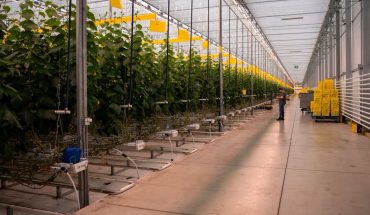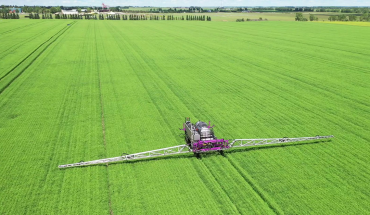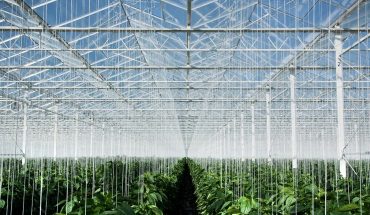 BCG’s Centre for Canada’s Future, RBC, and The University of Guelph’s Arrell Food Institute have released a study on how innovation in agricultural technology will be key to producing low carbon, sustainable food systems in Canada.
BCG’s Centre for Canada’s Future, RBC, and The University of Guelph’s Arrell Food Institute have released a study on how innovation in agricultural technology will be key to producing low carbon, sustainable food systems in Canada.
The Next Green Revolution study identifies seven technologies to kickstart the country’s agricultural transformation, the investment needed to support them and the challenges farmers face in adopting these innovations. Recommendations for public and private sectors are also made.
What is ag-tech? How important is it to Canadian farming, our economy, the environment?
I asked Keith Halliday, Senior Director at BCG’s Centre for Canada’s Future and Evan Fraser at the University of Guelph’s Arrell Food Institute about ag-tech, the study, and how agricultural innovations can make a positive impact on Canadian farming and food supply as well as the environment.
Ag-tech

Keith Halliday, Senior Director at BCG’s Centre for Canada’s Future
“Agriculture technology (ag-tech) is critical to enabling The Next Green Revolution,” began Halliday.
“Innovations in game-changing agriculture technologies can help Canada feed a growing global population. But they’re also playing a new role: reducing agricultural emissions and enabling soil to absorb greenhouse gas emissions.”
Halliday revealed, “We’ve identified seven innovations that, if applied in a way that is equitable and supported by producers and communities, hold the most promise to cut emissions and store or sequester them in soil. These include:
- Precision technology
- Carbon capture, utilization, and storage (CCUS)
- Anaerobic digesters
- Controlled environment farming
- Livestock feed additives
- Agriculture biotechnology
- Cellular agriculture
Halliday added, “As it stands, most ag-tech investments in Canada are focused on productivity enhancing digitization and automation, which help increase yields and improve farm operations. We need more investment in innovation to advance sustainable and regenerative farming.”“Canada is extremely well-positioned to not just lead the world in the adoption of these ag-techs but in the development of them. We are a top exporter of key crops with a deep history of agricultural innovation and by engaging diverse actors in the Canadian food system, we can develop technologies that are responsible, creative, and efficient.”
“Canadian innovators are at the vanguard of change in agriculture and food,” remarked Fraser.

Evan Fraser at the University of Guelph’s Arrell Food Institute
Fraser shared, “Farmers in Canada are among the most productive in the world and can lead the way in reducing emissions, but they can’t do it alone. We need to further our efforts in connecting the tech industry with agriculture and facilitating the development and implementation of public policies that will create the conditions for Canadian ag-tech leadership, setting best practices for the rest of the world. This means facilitating research, investing in innovation, and creating incentives to support the adoption of more ag-tech.”
Added Fraser, “One of the ways AFI is continuing the efforts around collaboration and support is by convening conversations that will help develop a Canada-wide strategy that showcases how we can innovate and use agri-food technology wisely and in doing so drive the green economy, create jobs, ensure Canada’s global leadership, and deliver a carbon neutral food system.”
Addressing Climate Change and Greenhouse Gas Emissions
Stated Fraser, “We’ve seen the detrimental impacts that climate change has on agriculture. Natural disasters like droughts and floods can halt food production, cause breakdowns in supply chains and financial strain for farmers as well as consumers.”
“Canada’s agricultural sector is at a turning point,” agreed Halliday.
“Canada’s farmers are among the most productive on the planet, supplying $75 billion worth of food to global markets each year. But that success has come at a cost — those same food systems produce 93 megatonnes, or just over 10%, of Canada’s greenhouse gas emissions every year. At this rate, these emissions could rise to 137 megatonnes as the world’s population increases 26% by 2050.”
Fraser expanded on this to say, “While the agriculture sector does contribute to greenhouse gas emissions, there are mechanisms that Canadian farmers have at their disposal to reduce and even remove emissions from the atmosphere. This includes using the soil as a tool to store carbon and drawing greenhouse gas (GHG) emissions from the atmosphere creating a carbon sink. Examples of these solutions include cover crops and no-till practices. Many farmers in Canada have already adopted regenerative agriculture, helping to protect biodiversity and environmental health.”
Added Halliday, “We need to grow more for humanity, with less impact on the planet.”
‘A national standard for measuring the impact of emissions-cutting activities could be used to compensate farmers and mitigate their risks, and to empower policymakers, corporations and financial institutions to mobilize support,” shared Halliday. “This standard — also key to attracting investment — will need to be national in scope while also being customized to the very different local farming conditions across Canada, as well as aligned internationally with our major trading partners.
Research Findings
“Our research found that a new generation of agricultural technologies could help Canada cut up to 40% of 2050 emissions,” explained Halliday.
Report key findings were outlined by Halliday as follows:
- Key technologies and approaches that can cut emissions include carbon capture, utilization and storage, feed additives, anaerobic digesters, and precision technology.
- Nature-based solutions that sequester carbon will also be critical. Soil carbon has the potential to be one of our most powerful tools, raising the amount of carbon stored in soil to as much as 35 megatonnes.
- A Canadian standard for measuring the impact of emissions-cutting activities could provide a vital tool for both compensating farmers and empowering policymakers and financial institutions to support activities.
- A national effort, tailored to regional contexts and focused on the key pillars of technology, finance, skills and public policy, will be essential to increasing our production while also cutting emissions.
Partnerships are Critical
“For Canada’s agriculture sector to keep up with growing demand, we need to work together with government, academia and other partners so that farmers can help protect the resources it so heavily depends upon,” advised Fraser.
“With the generous support of the Arrell Family Foundation, Arrell Food Institute (AFI) at the University of Guelph is improving global food systems. It brings people together to conduct research, train the next generation of food leaders and shape social, industrial and government decisions, always ensuring food is the central priority.”
Fraser also remarked, “With the understanding that bridging partnerships across industry, academia, and government can have powerful impacts, AFI often works with partners on various initiatives. In 2022 the collaboration with RBC and BCG on this series of research reports emerged. Prior to this, AFI was already exploring the topic of sustainable food systems and how agriculture specifically can play.”
Added Halliday, “Accelerating private investment in Canadian agriculture technology will mean thinking more creatively about the tax and financial incentives we have in place. Canada needs to encourage the automation that will be key to our agricultural productivity and international competitiveness — and that will draw more capital to the technologies that will drive the future of low emissions farming.”
Cost remains a limiting factor in adopting ag-tech, especially up-front costs, so it’s clear why partnerships from private as well as public sectors are critical.



